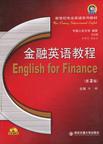金融英语教程
出版时间:2010-9 出版社:西安交通大学出版社 作者:韦娜 主编 页数:234
前言
“新世纪专业英语系列教材”自2003年出版以来在全国高校使用了6年.受到国内专家学者及广大教师和学生的好评,其中《工商管理英语教材》被列入教育部“普通高等教育‘十一五’国家级规划教材”。 为更好地推进专业英语教学,强化使用效果,编者们遵循教育部《大学英语课程教学要求》(以下简称《课程要求》),结合实际使用中的反馈意见.经过近2年认真仔细地调整与策划,对第1版进行了修订与补充,并在原有基础上增补了6个品种,推出“新世纪专业英语系列教材”(第2版)(总计13种)。
内容概要
《金融英语》主要由国际贸易概论和国际贸易实用操作两部分组成,是通俗国际贸易理论与国际贸易工作实践的结合。该教材采用了大量来源于生活、工作中的国际贸易资料来阐明相应的国际贸易理论,理论中有实践,实践中又渗透出理论,充分展现了生活、工作中大量存在的国际贸易现象,从全新的角度分析了国际贸易的丰富内涵。该教材用灵活多样的形式、地道的语言以及来源于生活、工作中的案例对国际贸易知识的普及以及解决工作中的实际问题将起到启迪及积极的推动作用。 本书适合国际贸易专业及其他专业的学生、与国际贸易相关的工作人员及需要此方面知识的人士使用。
书籍目录
Unit 1 Money Additional Reading: Motives for Holding MoneyUnit 2 The Interest Rate Additional Reading: The Role of-the Federal Reserve in the Determination of Interest Rates Additional Reading: The Banking System and Recent Monetary Reform in ChinaUnit 4 Financial Institutions Additional Reading: Insurance ManagementUnit 5 Financial Derivatives Additional Reading: New Futures Contracts and Trading ArrangementsUnit 6 Financial System and Markets Additional Reading: Financial Intermediaries Additional Reading: The Consequences of InflationUnit 8 Monetary Policy Additional Reading: Monetary versus Fiscal PoliciesUnit 9 Foreign Exchange Additional Reading: Foreign Exchange FuturesUnit 10 IntemationaloFinanciahSystem Additional Reading: Balance of PaymentsAppendix Ⅰ Reference Translation of the Main TextsAppendix Ⅱ Key to the ExercsesAppendix Ⅲ TapescriptsAppendix Ⅳ GlossaryAppendix Ⅴ Bibliography
章节摘录
A firm or an individual can obtain funds in a financial market in two ways. The most common method is to issue a debt instrument, such as a bond or a mortgage, which is a contractual agreement by the borrower to pay the holder of the instrument fixed dollar amounts at regular intervals(interest and principal payments)until a specified date(the maturity date), when a final payment is made. The maturity of a debt instrument is the time(term) to that instruments expiration date. A debt instrument is short-term if its maturity is less than a year and long-term if its maturity is ten years or longer. Debt instruments with maturity between one and ten years are said to be intermediate-term. The second method of raising funds is by issuing equities, such as common stock, which are claims to share in the net income (income after expenses and taxes) and theassets of a business. If you own one share of common stock in a company that has issued one million shares, you are entitled to 1 one-millionth of the firms net income and 1 one-milli0nth of the firms assets. Equities usually make periodic payments (dividends) to their holders and are considered long-term securities because they have no maturity date. The main disadvantage of owning a corporations equities rather than its debt is that an equity holder isa residual claimant: that is, the corporation must pay all its debt holders before it pays its equity holders. The advantage of holding equities is that equity holders benefit directly from any increases in the corporations profitability or asset value because equities confer ownership rights on the equity holders. Debt holders do not share in this benefit because their dollar payments are fixed.
图书封面
评论、评分、阅读与下载
